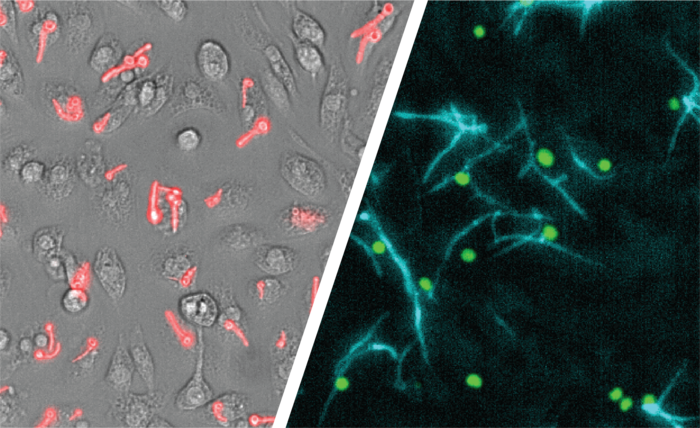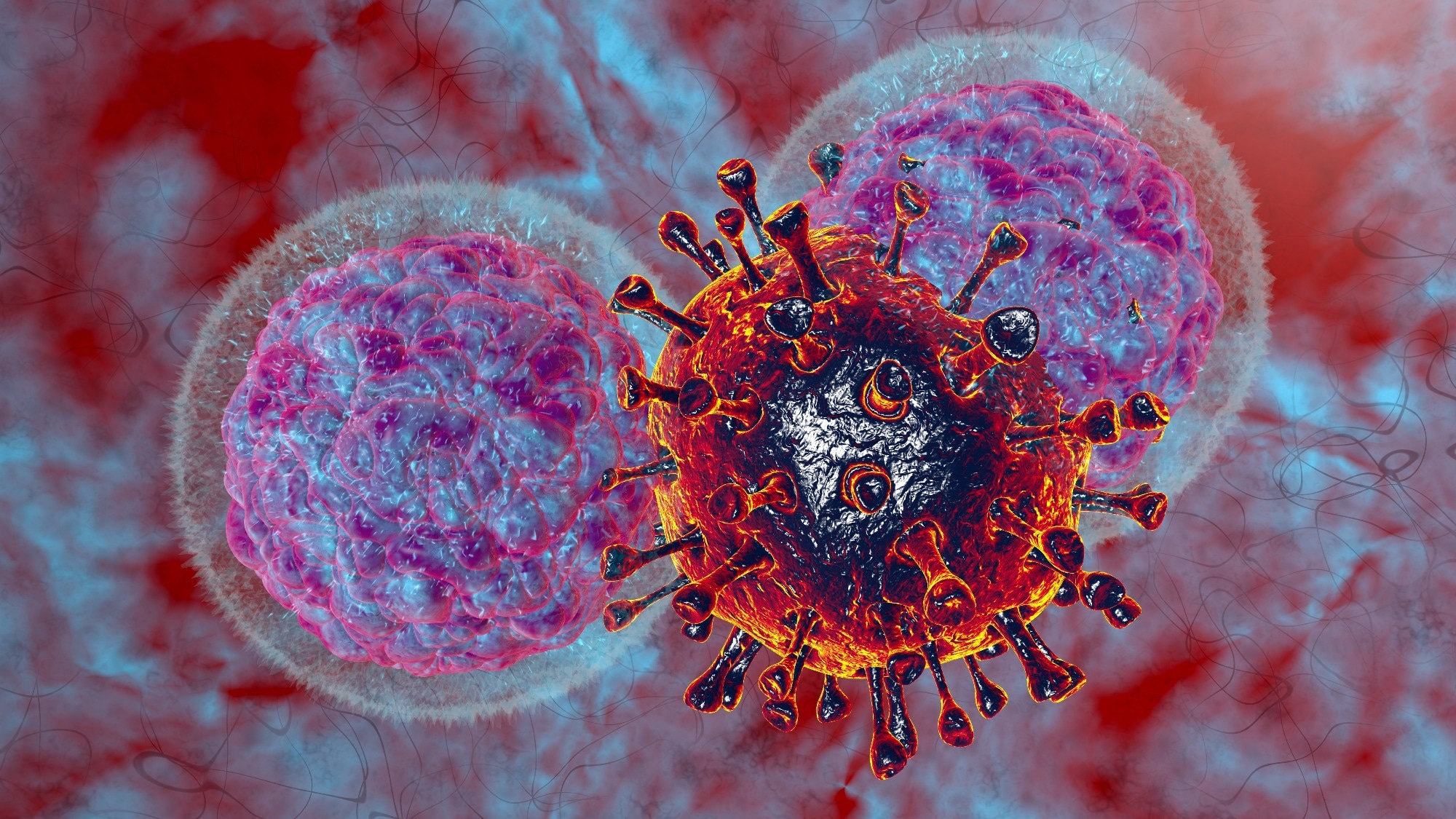Reviewed by Danielle Ellis, B.Sc.Sep 21 2022
The impact of fungal diseases on human health is significant on a global scale. Since they are often challenging to identify and treat, there is a pressing need for better diagnostic tools and antifungal medicines.
 A microscopy imaging assay, developed by Olivier et al., captures the escape of a fungus (C. albicans) from immune cells (macrophages). Left: Fungi (red) contained inside the immune cells. Right: escaped fungal filaments (blue) and the nuclei of dead immune cells (green). Image Credit: Monash University
A microscopy imaging assay, developed by Olivier et al., captures the escape of a fungus (C. albicans) from immune cells (macrophages). Left: Fungi (red) contained inside the immune cells. Right: escaped fungal filaments (blue) and the nuclei of dead immune cells (green). Image Credit: Monash University
Researchers from the Monash Biomedicine Discovery Institute have demonstrated how the common fungus Candida albicans evades immune responses using newly discovered imaging technologies. The researchers claim that this involves a fungus that can shape-shift in an “alien-like” manner to escape immune cells.
Professor Ana Traven and PhD student Françios Olivier’s study, which was published in the journal Cell Reports, explains how Candida albicans employs a sword-like filament to activate toxin molecules and cell death pathways that harm immune cell membranes, allowing it to escape and spread.
With the use of the imaging technology created by Olivier and Monash Micro-Imaging, fleeing fungi can be located in real-time. Olivier claims that the automation of image analysis and increasing computer processing capacity allowed for the completion of this study.
We could harness a great deal of data which provided insight into this immune escape mechanism.”
Françios Olivier, PhD Student, Monash University
Candida is a yeast that frequently inhabits the human mouth, urinary system, and reproductive systems. Normally, it does not infect its host with sickness, but under specific circumstances, it can transform into a hazardous version.
The common cause of life-threatening illness in ICU, post-surgical, and cancer patients continues to be Candida albicans. The immune system has a specific type of cell called a macrophage that is in charge of consuming invaders (bacteria, fungus, and cancer cells) and inciting immunological reactions.
 Image Credit: Numstocker/Shutterstock
Image Credit: Numstocker/Shutterstock
Candida albicans transform into long, filamentous cells to evade macrophages. The fungus spreads as a result of this escape. In the process, it sets off immunological reactions that, if not controlled, can be dangerous.
Targeting the fungus as it is escaping “presents a promising therapeutic avenue, preventing both the spread of the infection and having the potential to dampen inflammation,” according to Professor Traven.
The processes underlying this escape have, up until now, remained a mystery since researchers have not been able to thoroughly examine this escape maneuver, which they can now. The study team created a live-cell imaging platform that tracks Candida’s escape from macrophages in real time and reveals several escape strategies.
Source:
Journal reference:
Olivier, F. A. B., et al (2022) The escape of Candida albicans from macrophages is enabled by the fungal toxin candidalysin and two host cell death pathways. Cell Reports. doi:10.1016/j.celrep.2022.111374